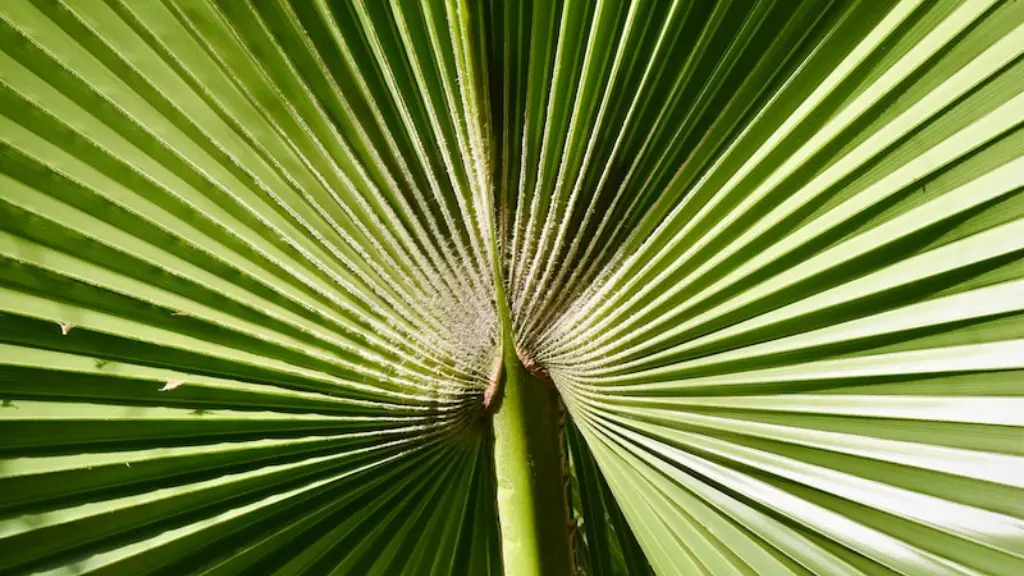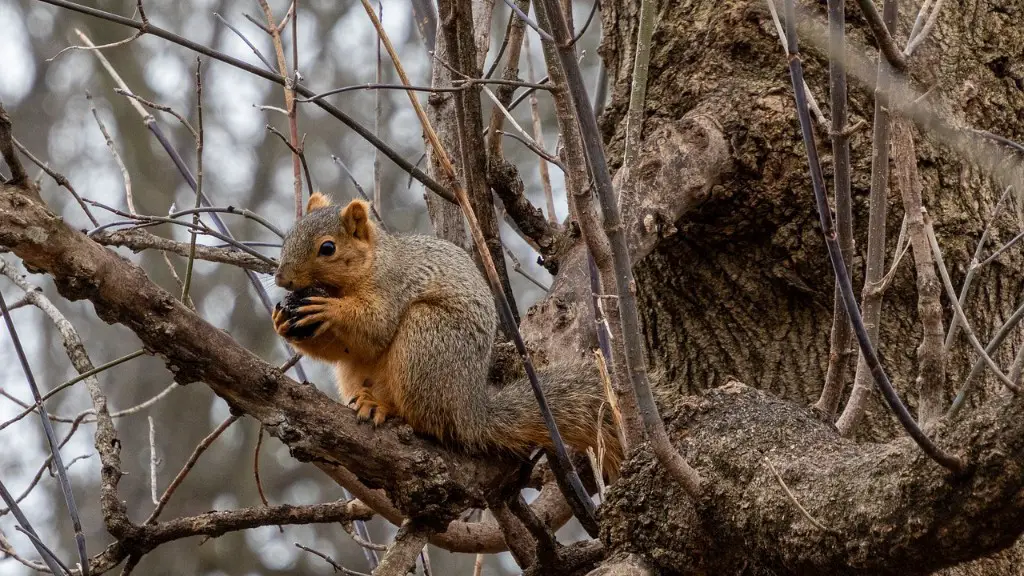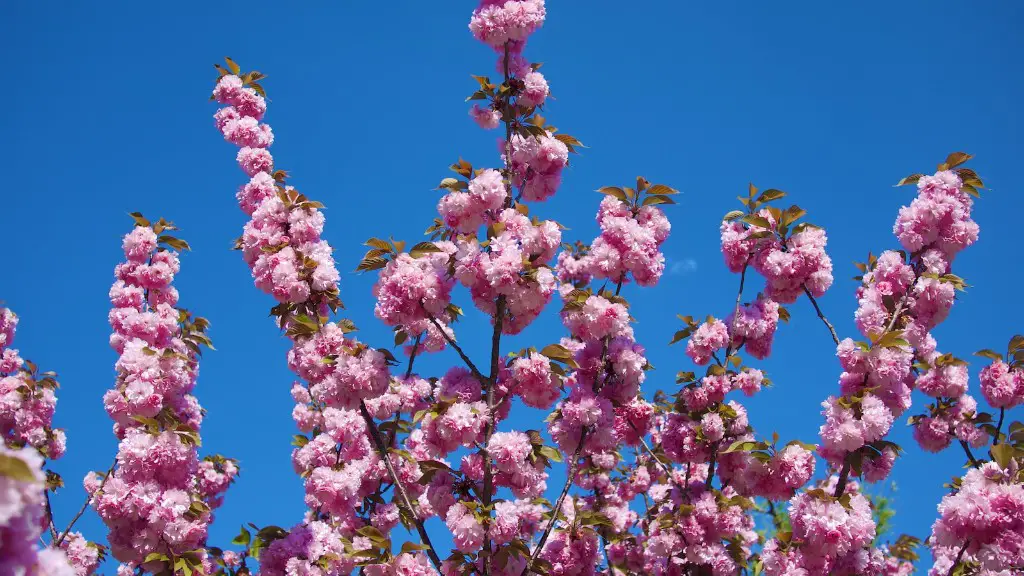Diagnose the Plant
Palm trees are an integral part of many homes, gardens and landscaped areas, but their stunning aesthetics can be short lived. Differentiating between a healthy tree and a dead one is simple, but as a general rule of thumb, a dead palm tree is less vital and upright, and may start to take on a greyish tone.
The trunk is one area to focus your attention when trying to identify a dead palm tree. An unhealthy trunk will be dry and brittle, while healthy palms are vibrant and flexible. Checking the trunk of a dead palm tree should be as simple as running your fingers along the surface and verifying whether or not it is still alive. Additionally, some dead palms may exhibit visible signs, such as splitting or rotting.
Brownish-yellow frond spots are a clear indication of death for many types of palm trees. Fronds are considered dead when the leaflets twist and turn brown from the tips downward, in which case the tree is almost always dead.
Check the Fronds
Palm trees are significant as they provide shade, aesthetics and even fruit in some cases. As a result, inspecting the fronds is one of the best ways to determine tree health. Frond symptoms are hard to miss, and examining the foliage will give you a good indication of whether or not the palm tree is dead or alive.
Look for fronds that are yellow, brown or displaying signs of decay – these are the clearest signs of death or disease. A healthy and vibrant frond will have a glossy sheen and should naturally move in the wind. Other signs to look out for include dry and brittle fronds, as well as browning and yellowing within the foliage.
Check the Root System
The root system of a healthy tree should be well developed, with a balanced structure that anchors the tree in the ground. Dead palms usually have shallow root systems with little to no biomass.
A healthy root system should also be even, with a well-distributed depth and width across the entire root system. It’s also a good idea to check for damage, diseases and other signs of disease. If you find the roots to be too shallow or not evenly distributed, this is a sign that the tree is either dead or in bad health.
Look for Fungal Growth
It’s not uncommon for dead palms to start developing fungal growth on the trunk or in the root system. Excessive fungal growth is a sign that the tree is dead, or it is on its way to dying. Fungal growth can be spotted easily, and usually consists of white- or cream-coloured patches, with a slight red tint.
Fungus can be seen in various forms, such as moss or scale, and it’s a sure sign that the tree is dead. Unless treated quickly, the fungus can spread and infect other plants or parts of your yard.
Look for Fearless Bugs
Dead palm trees are generally accompanied by various bugs, pests and insects. Insects such as decomposing beetles, borers, aphids and other pests typically live on dead palms that are in their twilight stages.
These bugs are a form of scavenger, looking for food and shelter to inhabit a dead palm. If you find any kind of bug on the tree, it’s a clear indication that the tree is dead and should be removed immediately.
Look for Shriveled Seeds
If your palm tree is producing shriveled and discoloured seeds, this could be a sign that the tree is dying. This could also be a sign of disease if the tree is producing more seeds than usual.
A healthy tree should only produce a few, healthy and vibrant seeds each year, and the colour should remain consistent. Shriveled, black or discoloured seeds are an unmistakable sign that your tree is dead and should be removed straight away.
Postmortem Decay
When a palm tree is dead, it will start to decay. All organic matter will decay over time and this will start to happen as soon as the tree dies. The roots, trunk and leaves will start to rot, and over time the dead tree will break down into the ground.
Dead trees are also susceptible to pests and disease, so it’s important to remove the tree as soon as possible to prevent the spread of fungi and other pests. Not removing a dead palm tree poses a risk of diseases, such as root rot and blight, spreading to other parts of your yard.
The Importance of Removal
A dead palm tree should always be removed from the premises, preferably by an experienced team. Gardeners, landscapers and tree removal companies will safely and efficiently remove the tree, preventing further damage to your property or garden.
It’s important to act fast when removing a dead palm tree in order to prevent the spread of disease and pests. Professional removal teams will be able to tackle the job quickly and safely, disposing of the dead tree in the correct manner.
Common Reasons for Palm Tree Death
Common reasons why palm trees die include environmental factors, diseases and insect infestations. In some cases, it can be difficult to determine the exact cause of death.
For example, cold weather can kill a palm tree, even if the temperature does not dip below freezing. If the weather is too cold for too long, it can cause the tree to slowly die. Certain palms can also be vulnerable to pests and diseases, and it’s important to treat any issues as soon as possible to prevent further damage.
Preventing Palm Tree Death
The best way to prevent palm tree death is to be proactive when caring for the tree. Overwatering can decrease the life span of a palm, so make sure not to water the tree too often in order to keep it healthy.
Make sure the tree is planted in an area with proper drainage, and check the surrounding soil to ensure it drains properly. Using mulch or other ground coverings can help keep the soil moist and prevents weeds from taking over.
It’s also important to protect your palm tree from wind, cold and extreme temperatures, as these can cause the tree to die. If exposed to these conditions for too long, the tree will become unhealthy and may start to show signs of death or decay.
Common Treatments for a Dying Palm Tree
The most common course of action for a dying palm tree is to apply the appropriate fertilizer to the tree. Fertilizers are available in both synthetic and natural forms, and should be applied to the base of the tree in order to revive the tree’s health.
It’s also important to check the surrounding area of the palm tree for any pests or diseases that may be causing distress to the tree. If any signs of pests or disease are found, it’s important to immediately treat the issue using the appropriate treatments.
In some cases, a dying or dead palm tree can be treated with a combination of fertilizers, pest and disease treatments, pruning and pest control. If the tree shows signs of death or decay, it’s important to take immediate action.
Conclusion
Checking for the signs of death on a palm tree is an important part of maintaining a healthy garden and landscape. Tree health is dependent on both environmental factors and proper upkeep, so it’s important to diagnose the tree as soon as possible in order to determine whether or not it is dead.
Dead palms should always be removed from the premises as soon as possible to prevent the spread of disease and pests. Treating a dying or dead palm tree may be possible, but it’s always best to act quickly to salvage the life of the tree.



